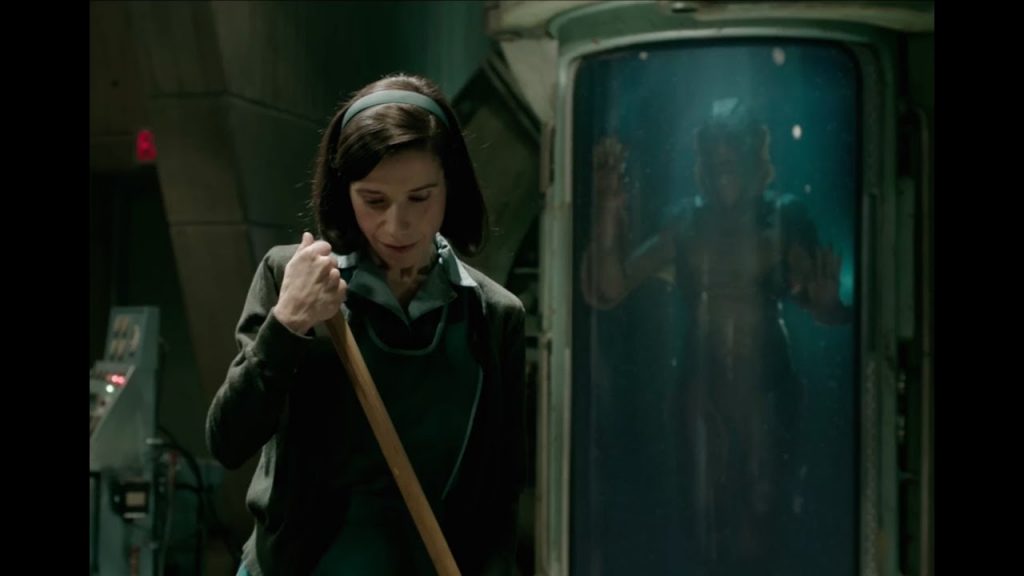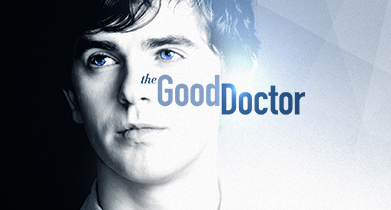October 16, 2017
 With autism rising in prevalence, the entertainment industry has been noticeably increasing its representation. Over the years as a parent, I have noticed a smattering of characters on television shows that appear to have autism, yet the show does not officially acknowledge this. This year feels different somehow; for 2017 two new television shows were on my radar: Atypical on Netflix and The Good Doctor on ABC.
With autism rising in prevalence, the entertainment industry has been noticeably increasing its representation. Over the years as a parent, I have noticed a smattering of characters on television shows that appear to have autism, yet the show does not officially acknowledge this. This year feels different somehow; for 2017 two new television shows were on my radar: Atypical on Netflix and The Good Doctor on ABC.
I have not had a chance to sit down and watch Aytpical yet, but I did see many glowing reviews over the summer when it was released and much chatter about it on Facebook. The only negative feedback I was able to find was from adults on the spectrum that did not feel it was an accurate portrayal.
I remember starting to see promos for The Good Doctor towards the end of last season on the major networks in May and wondering what it would be like. After all, it was on a network that filmed pivotal scenes from one of my favorite shows, Grey’s Anatomy, with with a large Autism Speaks poster hanging in the background in the hallways of Sloane Grey Memorial Hospital. Speaking of Grey’s Anatomy, I was surprised to see this advertisement air during the season finale – no small feat considering that this was an expensive primetime slot:
I was floored. It wasn’t obvious at first, but it was an ad for Touch Chat on the iPad with a nonverbal teen participating in a conversation with her peers on the soccer field. This wasn’t 11:00 p.m.; it was Thursday – TGIT – the most popular night on television, and Apple was acknowledging a large customer base that often feels invisible. My twins have been using iPads as communication devices for several years now, so I had to chuckle just a little bit remembering all of those repeat purchases due to the unpredictability of autism and our multiple broken devices. Don’t forget all of the apps and the fact that AAC (augmentative and alternative communication) apps can run hundreds of dollars but are still a more affordable option than a dedicated speech-generating device costing thousands. The version that aired showed a shorter clip of the girls on the soccer field. I wish that it had aired in its entirety – it makes me tear up to see the whole version – but it felt so good to see representation in such a prominent way during a popular show’s season finale.
This summer, while I waited for the fall lineup, I decided to take a very rare trip to a movie theater to see War for the Planet of the Apes as it was highly rated, and I had surprisingly enjoyed the previous movies. What happened when I saw it was for me, unexpected.
Before the movie started, this trailer for The Shape of Water came on – wait a minute! The main character is mute and uses sign language? Usually, people with perceived disabilities are the the butt of jokes or the center of pity and shame – or else a savant. This movie looks amazing, and I was caught off guard.

Oh, and War for The Planet of the Apes? I had heard many good things about it, but I was very surprised that there was a subplot that was not all over my news feed. As the parent of severely affected nonverbal twins, I was not expecting to bawl my eyes out at this movie. I am not going to spoil it for you, but meet Nova. All I had heard about it was that it was very timely regarding the current political climate, but there is a strong theme about the perception of the worth of intelligent life and fear of being disabled or having a child with a disability. Now, maybe its me and my knack for seeing everything through the eyes of a special-needs parent, but I found this a significant story line as well and acknowledgment in a form that I hadn’t felt before in a mainstream movie that wasn’t a documentary.
I have always been a fan of medical dramas and watched every episode of House. So, when I heard The Good Doctor was coming out with all of the autism hype, I was caught between wanting to reserve judgment and rolling my eyes along with many other parents. An argument could be made, if we are going to consider the plot device of having a character that appears to have high-functioning autism but is not acknowledged on screen as such, that House had already covered that territory. What he did portray, quite convincingly, was the narcissism that some doctors possess. He was also horrible with relationships, had a terrible bedside manner, and was an outright jerk, but his brilliance somehow made this excusable. He was a drug addict who struggled with physical pain and personal demons until the end of the series. If they had attached a diagnosis to his behavior, it would have become less entertaining to some. In the same way, the lead character on another Fox series, Dr. Temperance Brennan on Bones, clearly had undiagnosed autism that the series addressed in an interesting way in its finale this year. Emily Deschanel, the actress that portrays Brennan, talks about it in this interview. The writers knew that this would be their final season, so they made bold choices in their final story arc. In the second-to-last episode, due to an accident, Brennan lost the skills that made her famous for solving crimes, When I watched the last episode, when she talked about what it felt like to have her unique skills taken away, the abilities and intelligence that she felt had defined her, it felt similar to how many adults with autism feel about what they often consider to be a defining characteristic, their autism.
Leading up to its premiere, the feedback and anticipation for The Good Doctor had been mostly apprehensive and negative in my Facebook feed. Of course mainstream reviews have been positive, the advertised clips with the sunny optimistic music making it appear to be yet another glamorization of the condition known as autism to the media but which is often very different to families living with it. Many parents were repelled by the concept as advertised and, rightfully, were not interested in another Hollywood representation of how amazing it is to have autism paired with savant syndrome. When you have an affected child, the entire family feels it in ways that most of society does not understand given the current media portrayals. I have a different perspective than some as I am the parent of of four children that include two “low-functioning”children and one with a diagnosis that would be considered “high-functioning.”

I watched the first episode of The Good Doctor not knowing what to expect. I felt that they did not sugarcoat it, despite the fact that Dr. Sean Murphy is considered a “savant.” He saved the life of a child, but in return was treated as a strange, creepy guy that no one quite knew what to make of. The hospital where he had been hired spent the episode trying to block his residency because of his diagnosis and fears of liability, and his coworkers made it clear that he was not wanted. The flashbacks to his childhood were the most telling, showing the pain he was caused by family members that could not handle his autism to the point that all he had was his brother. The flashbacks were the hardest for me to watch. They did an excellent job showing his anxiety and difficulty with communication. Without spoiling anything, I tell my friends that haven’t watched it yet that there is a pause so long and uncomfortable that I hadn’t witnessed anything quite like it before. For anyone expecting the main character to prevail as endearingly “quirky,” this was not the case. If you had any doubts, the detail that he carries a toy scalpel in his pocket, carefully wrapped in a cloth, should tell you something. That is just the sort of thing that someone with autism might do.
What I especially noticed and appreciated was that, despite the popular notion that people with autism have trouble with empathy, flashbacks of Murphy’s life made it clear that this is not true. While there is a communication issue, this doctor truly wanted to help people with emotion that you could see in his face. As the parent of someone who is “high functioning’, I can tell you they really did a good job not trivializing his condition. He is smart, but no one admires him or gives him any credit for it. They only hire him because of the notoriety he brings to the hospital. There was no neat bow at the end, and while he wasn’t nonverbal and completely reliant on others for his care, he clearly had struggles to face. Whatever way you define it, autism can be isolating and lonely, leaving people full of anxiety and misunderstood. So can being intelligent in a way that most people do not understand, especially if your communication skills are lacking.
The gimmicky part of the show is the complex way he analyzes data, as though he has memorized medical textbooks, which is similar to House when solving a complex medical mystery. That can wear thin, but I also like information, so I tried not to let it distract. I know that this is the first episode, but as Grey’s Anatomy feels like it is nearing the end of its run, I plan on giving this show a chance to see where it goes. When watching the previews for it, I was interested in how the people in Dr. Sean Murphy’s environment seemed to be so awful but was not expecting the depiction of so much emotion in the family dynamics. Those dynamics were compelling enough to make me want to watch it again.
Based on this year in entertainment, I am cheered that there are strides being made toward better and more diverse character development of people with disabilities.
~ Karma
For more by Karma, click here.

















Another great character would be the autistic best friend of Abby-ca-Dabby on Sesame Street. She was introduced last year I believe the same time a child with an incarcerated parent was. I watched Atypical and not the child but the parents were the dynamic I was touched by. One parent doesn’t want to believe it- the Dad, and the other has supported him so long she has neglected her own self worth- the mom.
The issue I have with these two shows is both Autistic boys/guys portrayed with Autism, is not the majority of the severity of the condition. These portrayals almost “glorify” the condition. So many have moderate or severe Autism which is NOTHING like these portrayals. NOTHING!
Tina I have to agree. The systems we have are not equipped to handle the magnitude of needs that our kids have. I am thinking about a program called Gemiini for video modeling, I guess they have behavioral videos in there. I really liked the idea of using videos with PECS to aid more severe children in there understanding of life. Anyone else use it?
Well done. I had not watched the show and was urged to by friends who do not have children on the spectrum. I did in fact roll my eyes at the show’s idea but knowing that it is you who is recommending this show-I will give it a go and see how it feels to me. Thank you for seeing the points from several angles. I hope many people read this article.